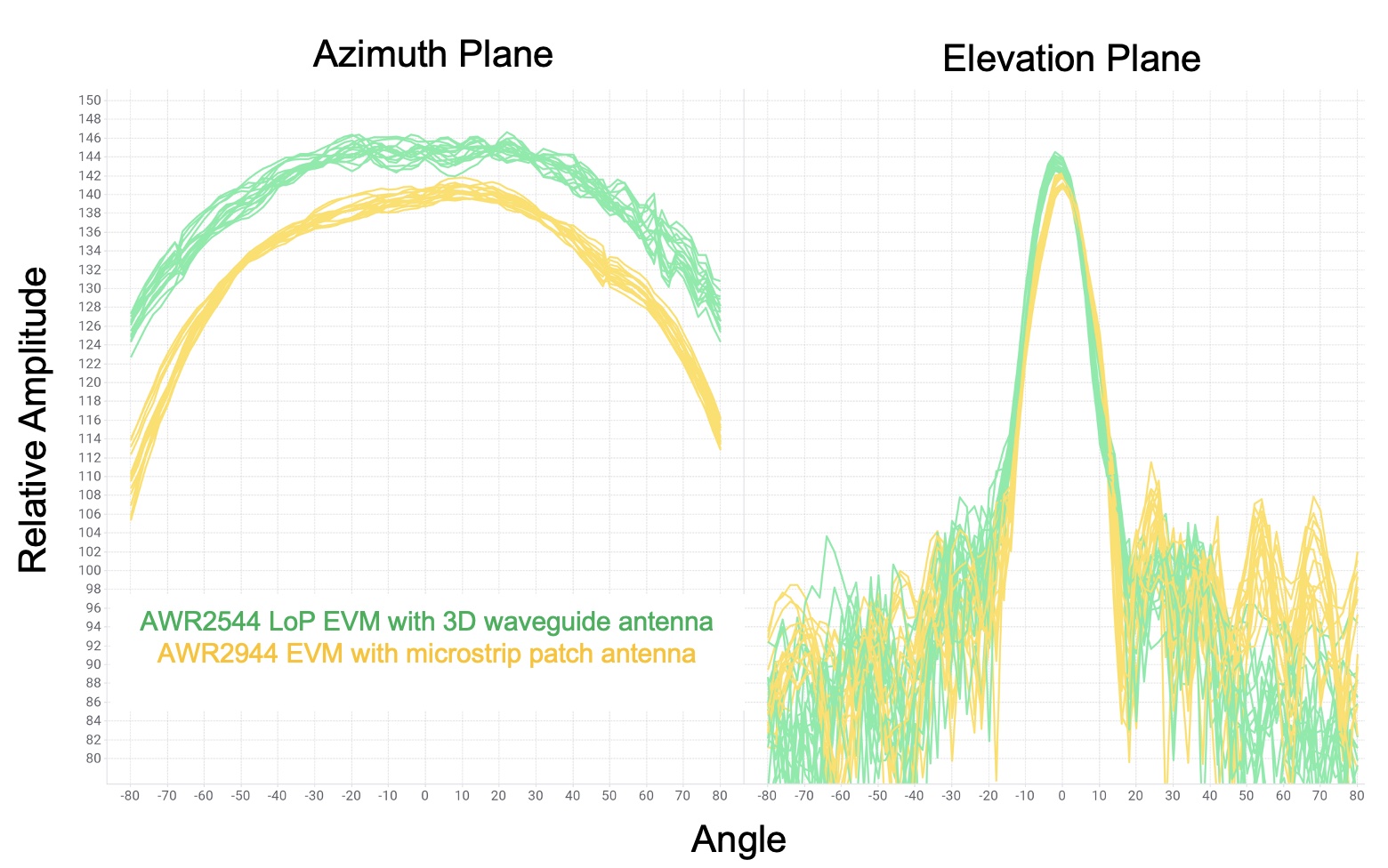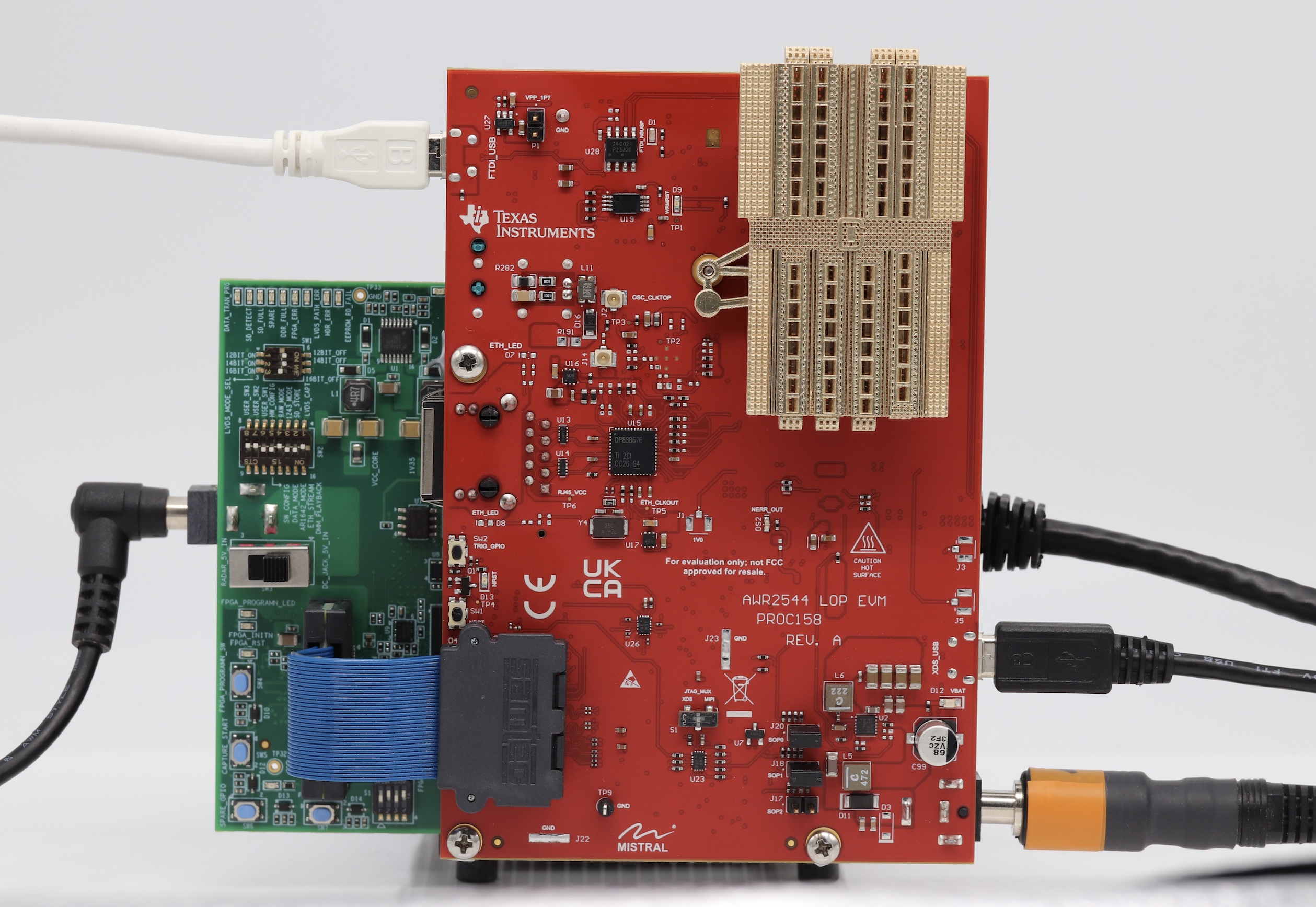SWRA801 January 2024 AWR2544
- 1
- Abstract
- 1Importance of mmWave and LoP in Automotive Radars
- 2Evolution From Non-LoP With Microstrip Patch Antenna to LoP With 3D Antennas
- 3Introduction to TI Launch on Package (LOP)
- 4LOP Design and Operation at 77GHz
- 5Advantages of LoP for mmWave Radar Chips
- 6Applications in Front and Corner Radars
- 7Challenges and Future Developments
- 8Conclusion
4 LOP Design and Operation at 77GHz
Designing mmWave integrated circuits and packages for operation at 77GHz comes with a set of challenges and considerations. The intricacies of this frequency demand meticulous attention to achieve the best performance. Design engineers must navigate factors such as signal propagation, impedance mismatch, interference, and antenna gain, to make sure the radar system operates at peak efficiency within the 77GHz spectrum.
 Figure 4-1 LoP Improvements ‘Rectangular
Waveguide Launch’ to ‘Double Ridge Waveguide Launch’
Figure 4-1 LoP Improvements ‘Rectangular
Waveguide Launch’ to ‘Double Ridge Waveguide Launch’Figure 4-1 shows the improvements TI made on LoP technology. After proving the concept with rectangular waveguide launch, TI developed a double ridge wave guide launch that enables smaller size and better performance. The AWR2544 device is a single chip 76–81GHz mmWave sensor composed of a FMCW transceiver that uses the LoP package to launch into a double ridge waveguide structure on the PCB. The AWR2544 sensor is a low-power, self-monitored, and ultra-accurate radar device for satellite architecture, helping to enable centralization of automotive systems.
At frequencies where mmWave radar operates, it is important to maintain a low loss and high signal integrity from power amplifier output to the package substrate, and RF BGA transitions to antenna. Radar advanced driver-assistance system (ADAS) systems can fail if a right match is not established throughout the chain due to the short wavelengths at these frequencies.
 Figure 4-2 Performance Comparison of LoP
Technology With 3D Antenna and non-LOP Technology With Microstrip Patch
Antenna
Figure 4-2 Performance Comparison of LoP
Technology With 3D Antenna and non-LOP Technology With Microstrip Patch
AntennaFigure 4-2 shows AWR2544 LoP evaluation module (EVM) performance with a 3D waveguide antenna, compared with AWR2944 non-LoP package, which uses a microstrip patch on the AWR2944 EVM. The AWR2944 device is a single-chip, fully integrated 77–81GHz frequency-modulated continuous wave (FMCW) edge radar sensor offering high-performance detections for safety and comfort functions. The AWR2944 has a similar RF front end as the AWR2544. The one main difference between a non-LoP and LoP EVM approach is that a high-quality, low-loss expensive PCB material is needed for the micro-strip patch antenna (AWR2944EVM). However, for the LoP 3D antenna the PCB can be made from a relatively cheaper substrate (AWR2544EVM). Figure 4-3 shows AWR2544 LoP EVM setup with 3D antenna and DCA1000 capture design.
 Figure 4-3 AWR2544 LOP EVM Setup With 3D
Waveguide Antenna and DCA1000 Capture Board
Figure 4-3 AWR2544 LOP EVM Setup With 3D
Waveguide Antenna and DCA1000 Capture Board